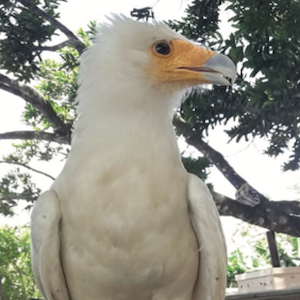An aberrant coloured Southern crested caracara Caracara plancus Miller 1777 (Falconiformes: Falconidae) from Brazil

Published: October 6 2023
Abstract Views: 422
PDF: 390
Publisher's note
All claims expressed in this article are solely those of the authors and do not necessarily represent those of their affiliated organizations, or those of the publisher, the editors and the reviewers. Any product that may be evaluated in this article or claim that may be made by its manufacturer is not guaranteed or endorsed by the publisher.
All claims expressed in this article are solely those of the authors and do not necessarily represent those of their affiliated organizations, or those of the publisher, the editors and the reviewers. Any product that may be evaluated in this article or claim that may be made by its manufacturer is not guaranteed or endorsed by the publisher.
Similar Articles
- Salvatore Pasta, Emilio Badalamenti, Found but lost? The short-lived success of Crataegus coccinea L. (Rosales: Rosaceae) in north-eastern Sicily (Italy) , Natural History Sciences: Vol. 11 No. 2 (2024)
- Giuseppe Rijllo, Sara la Cava, Giada Zucco, Stefano Scalercio, Gone with the wind? Condica capensis (Guenée 1852), a migrant species new for Italy (Lepidoptera: Noctuidae) , Natural History Sciences: Vol. 11 No. 1 (2024)
- Duilio Iamonico, Amara Noor Hussain, Paola Fortini, Gabriele Galasso, Amaranthus emarginatus s.lat. (Amaranthaceae) in Italy , Natural History Sciences: Vol. 11 No. 1 (2024)
- Francesco Gallozzi, First documented observation of differential dorsoventral coat colouration in wild boar Sus scrofa (Artyodactyla: Suidae) in Italy , Natural History Sciences: Vol. 11 No. 1 (2024)
- José Miguel Vela, Mauro Daccordi, The endophallus of Timarcha kiesenwetteri ssp. sagrensis Kuntzen 1911 (Coleoptera: Chrysomelidae: Chrysomelinae) , Natural History Sciences: Vol. 10 No. s1 (2023)
- Paola D’Alessandro, Elizabeth Grobbelaar, Mattia Iannella, Maurizio Biondi, Calotheca leonardii, a new flea beetle species from southern Africa (Coleoptera: Chrysomelidae: Galerucinae: Alticini) , Natural History Sciences: Vol. 10 No. s1 (2023)
- Armando Nappi, Small mammal remains from the Temple of Neptune, a window on the ancient landscape of the Sele Plain (Southern Italy) , Natural History Sciences: Vol. 8 No. 2 (2021)
- Arnd Schreiber, Historical ostriches in the Libyan Desert, with ecological and taxonomic considerations , Natural History Sciences: Vol. 11 No. 2 (2024)
Previous
11-18 of 18
You may also start an advanced similarity search for this article.











